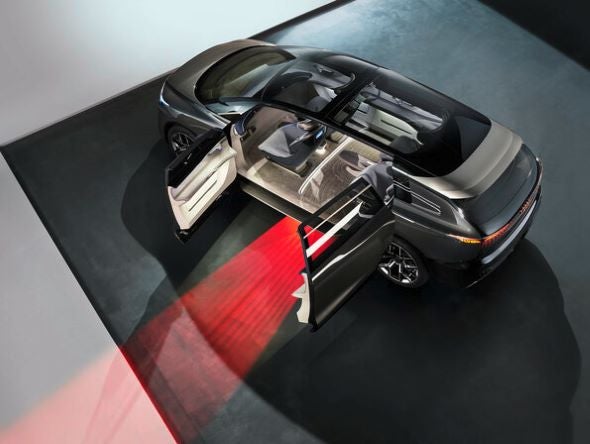
In an era when the very essence of what a car interior is – how it feels, looks and operates – is rapidly changing, a vision of tomorrow’s interior can seem blurry. But there is never any shortage of concept cars that give us a glimpse of what the future might hold.
Skoda’s vision of the future
Skoda’s PR machine recently drip-fed a bird’s-eye interior sketch of its all-electric Vision 7S concept, taking its signature ‘Simply Clever’ tagline to another level. In addition to sustainable materials, the minimalist interior is characterised by space for up to seven people in three rows of seats positioned on a completely flat floor. Its symmetrical wrap-around design incorporates a wide, horizontal dashboard that extends to the doors and enhances the sense of space. Interior technologies include haptic controls, ambient lighting and door panels that feature interactive visual elements. The integrated child seat is cocooned in the centre console which, says the Czech brand, is the safest place in a vehicle. The backrests of the front seats are fitted with holders for multimedia devices for passengers in the second and third rows.

Audi’s vision of urban EVs
Designers and engineers initially created the Audi urbansphere for use in traffic-dense Chinese megacities, although the concept is also suitable for any city worldwide. Its design studios in Beijing and Ingolstadt partnered to develop the concept car, one of three that Audi has revealed that aim to provide a far-reaching vision of future mobility. The four-seater’s doors are counter-hinged at the front and the rear with no B-pillar. The seats can swivel outward to make getting in and out of the car easier. A virtual red carpet of light is projected onto the ground next to the vehicle when the doors are opened. The dashboard is replaced with a screen that is projected onto a wooden panel. Rear seat occupants can kick back and watch movies on a huge OLED screen that flips down from the roof.
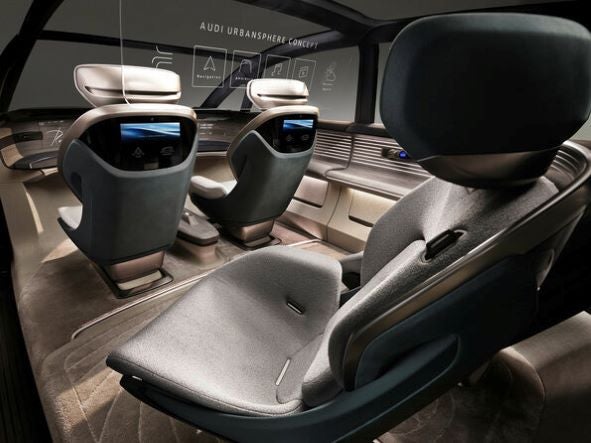
GAC’s hydrogen-powered minivan
China’s Guangzhou Automobile Group (GAC) recently unveiled its hydrogen-powered minivan concept, known as the Space. The interior reflects both a journey into Chinese culture and landmarks of the city of Guangzhou, home to GAC’s HQ. The L-shaped sofa truly resembles a lounge-on-wheels. Rows of stripes grow behind the sofa, then extend to the roof in the middle where the dome lights float like a cloud. Designers say passengers will enjoy not only a comfortable space but also a theatrical visual experience. The three-tier display system in the front row consists of a facial recognition display, a fabric touch display and a front IP display. The Space is equipped with Level 4 semi-autonomous driving system technology. When activated, the steering wheel and the facial recognition display morph into the dash.
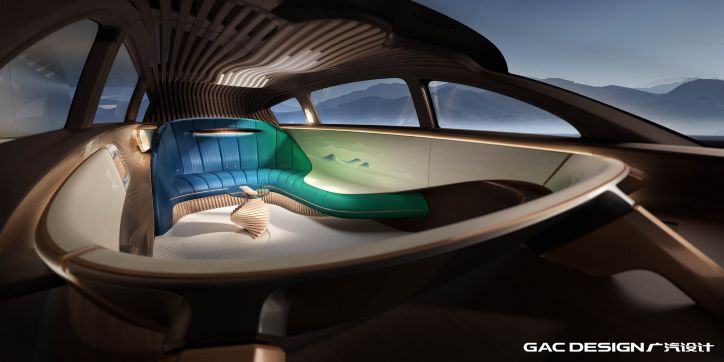
Sustainable supplier innovations
Grupo Antolin has unveiled a new virtual interior concept car, dubbed in-Pulse. It is the result of its North America Innovation Department’s vision of a flexible car interior space. The interior is based on an electric SUV with Level 4 of autonomy. Noteworthy features include the use of active acoustics systems, the projection of information on interior surfaces or personalised functional lighting integrated into the headliner substrate, and retractable sun visors that are automatically deployed only when needed. On-trend smart surfaces also take a prominent position in this concept through a new generation of trim and decorative parts. Sustainability is another priority objective, of course. The use of natural and sustainable materials integrated into this design includes cork, stone and vegan leather.
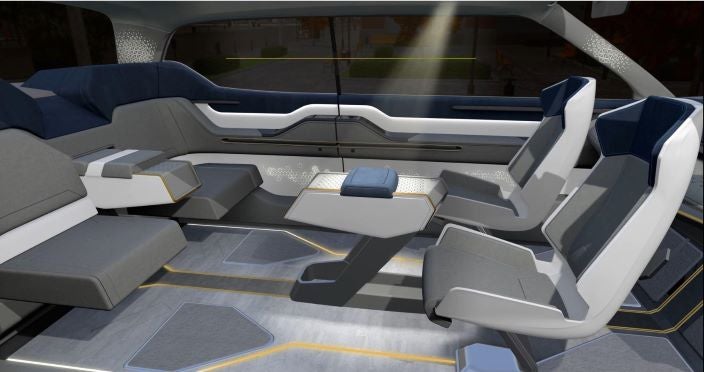
Continental has developed a premium surface material that can be applied to instrument panels, door panels, centre consoles, seat covers and headrests. “On the road to sustainable vehicle interiors, Benova Eco Protect is an important milestone in product development,” says Gabriele Wittmann, Global Director of Research at Continental. “By consistently avoiding any critical ingredients, plasticizers and solvents, the material is particularly low in emissions and odours and has a low product carbon footprint.” The material is currently being manufactured in Germany. Further production capacities will be made available at Continental’s American plant in Winchester, Virginia.
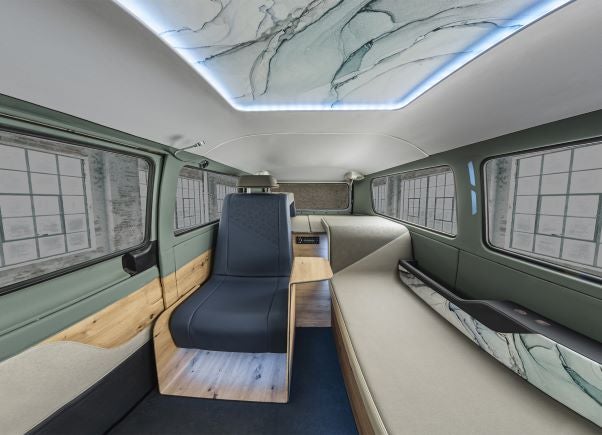
Faurecia is partnering with Veolia to develop compounds for automotive interior modules, aiming to achieve an average of 30% of recycled content by 2025. The pair will accelerate the deployment of breakthrough sustainable interior solutions implemented in instrument panels, door panels and centre consoles in Europe. The use of recycled plastics is one of the key challenges for the automotive industry as it plays an important role in reducing CO2 emissions and improving the environmental performance of the car.

While SAE Level 4 and 5 autonomous vehicles bring many opportunities to suppliers and OEMs in terms of being able to rethink the vehicle cabin, there are still plenty of hurdles to overcome. For example, many of today’s well-understood safety parameters are formulated with the knowledge that the drivers and passengers will be forward-facing with three-point safety belts and other occupant restraint systems designed to these boundaries. Rearranging the vehicle cabin, at Level 4 autonomy and beyond, with a multitude of different seating arrangements introduces far more complexity to passive safety in the cabin and could mean that many of the OEMs’ and suppliers’ visions for future vehicle interiors are never fully realised.
Whatever the future might hold for automotive interiors, it is clear that driver and passenger experience is changing, with advanced technologies able to boost safety and reduce the load on the driver, as well as open up new possibilities for passengers.
